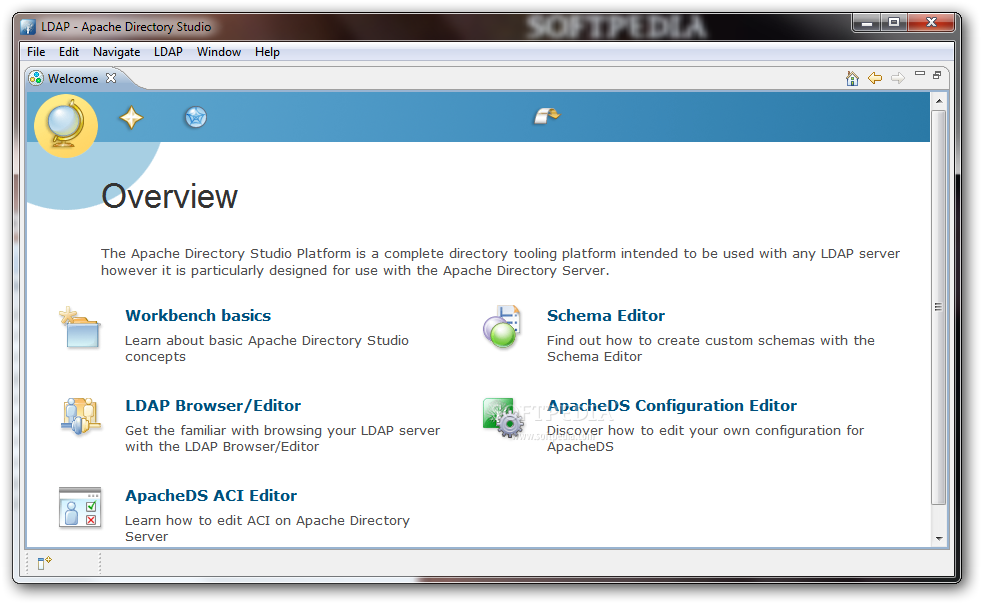

Table of Contents Preface and Legal Notices 1 General Information 1.1 About This Manual 1.2 Overview of the MySQL Database Management System 1.2.1 What is MySQL? 1.2.2 The Main Features of MySQL 1.2.3 History of MySQL 1.3 What Is New in MySQL 5.7 1.4 Server and Status Variables and Options Added, Deprecated, or Removed in
Japanese apache directory studio j license#
Your edition of MySQL 5.7, refer to your MySQLĥ.7 license agreement or contact your Oracleįor notes detailing the changes in each release, see theįor legal information, including licensing information, see theįor help with using MySQL, please visit theĬan discuss your issues with other MySQL users. If you have any questions about the features included in Included in the edition of MySQL 5.7 licensed to This manual describes features that are not included in everyĮdition of MySQL 5.7 such features may not be For information about which versions have been

It may includeĭocumentation of features of MySQL versions that have not yetīeen released.

It documents MySQLĥ.7.36-ndb-7.5.25, respectively. Hundreds of photos representing different aspect of Mesa History were submitted, three of which are on display here.This is the MySQL Reference Manual. In 1967, MHAS took part in a project with the Mesa Public Schools where a call for photographs was made. Today, this is the Mesa Historical Society which operates the Mesa Historical Museum. This organization was transformed in 1955 into the Mesa Archaeological and Historical Society.Ī major force in the community, the Mesa Archaeological and Historical Society attracted prominent speakers including governors and legislators such as Barry Goldwater. In the early 1950s Frank and Grace Midvale organized the Mesa Grande Archaeological Society to promote the opening of the Mesa Grande mound. Mesa Historical and Archaeological Society (MHAS)

Enjoy some of his photographs as you continue though the “Apache Way”. Lubken utilized large scale format cameras and glass plate negatives for his photography. There he issued postcards of local subject matter. The images reflect home and hearth, domestic and family activities, economic and subsistence activities.ĭuring Lubken’s time documenting the Roosevelt Dam project, he operated a photo studio in downtown Mesa, Arizona called the Lubken Company Commercial Photographers. From these we can glimpse how they lived and appreciate images from their life in the early 1900s. Because the Apache occupied much of this area, many of his photographs include images of the Apache and their lifestyle. During the first decade of the century, he photo-documented the construction of the Roosevelt Dam from start to finish.Īs part of Lubken’s assignment, he was to document the surrounding environment and its inhabitants. In order for the Bureau to assess the impact of irrigation on the desert, he documented construction projects, irrigation projects, local settlements and their people. Walter Lubken was the photographer for the US Bureau of Reclamation in the American West at the turn of the 20 th century.


 0 kommentar(er)
0 kommentar(er)
